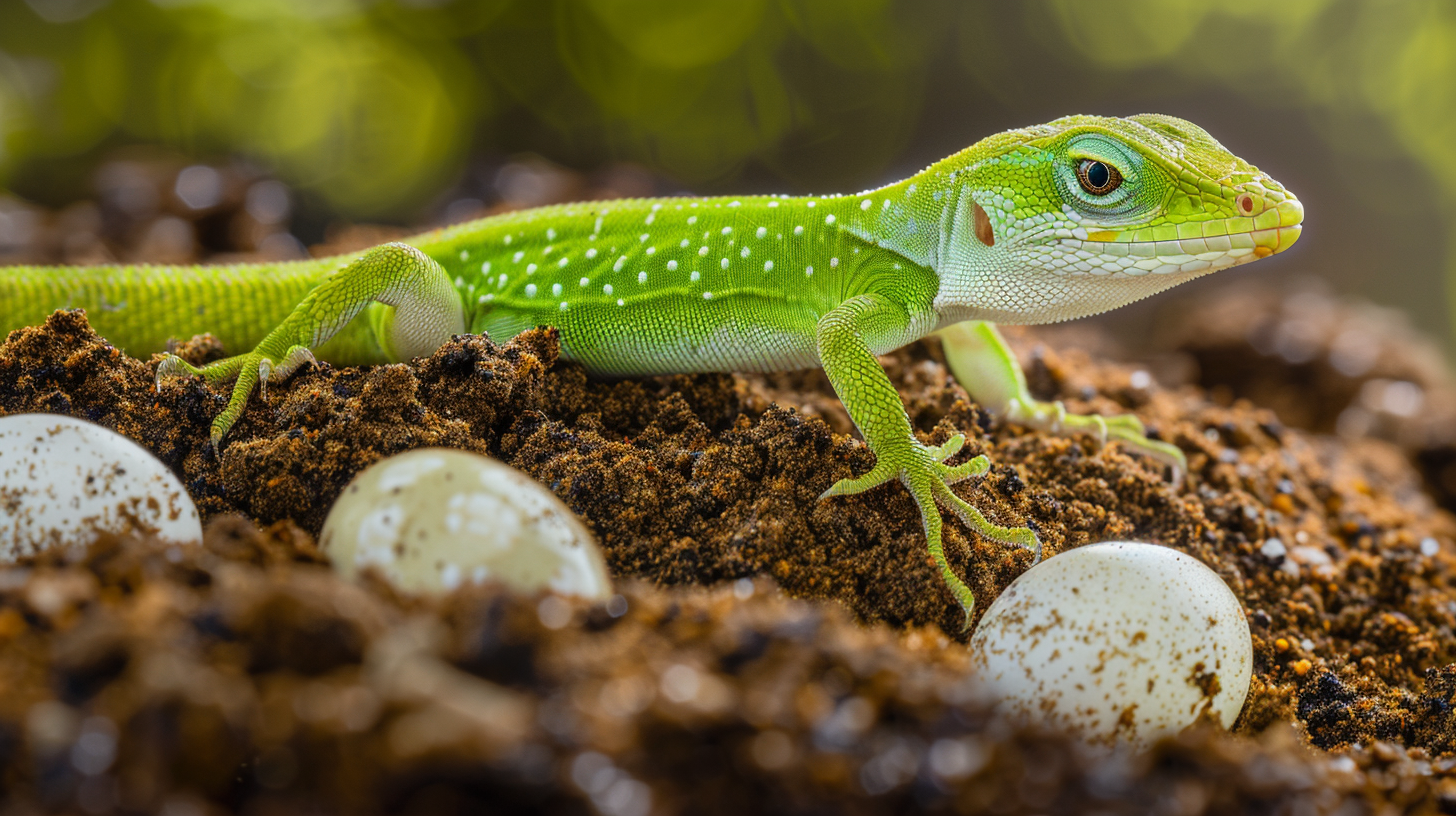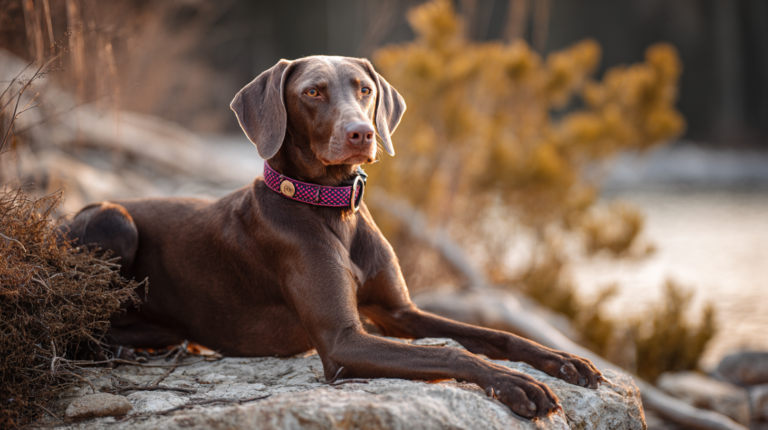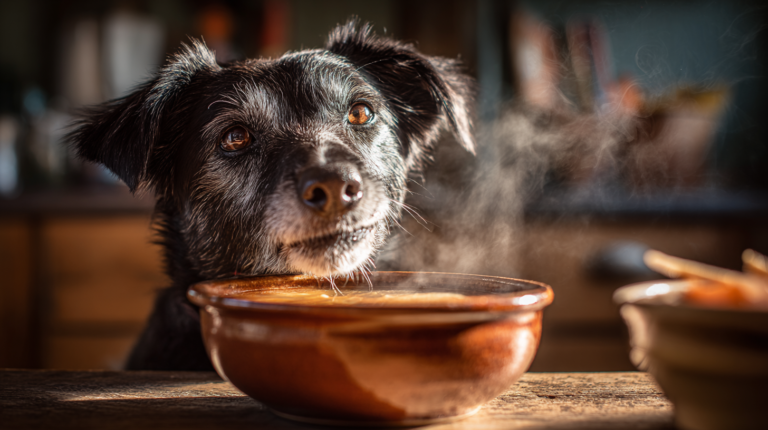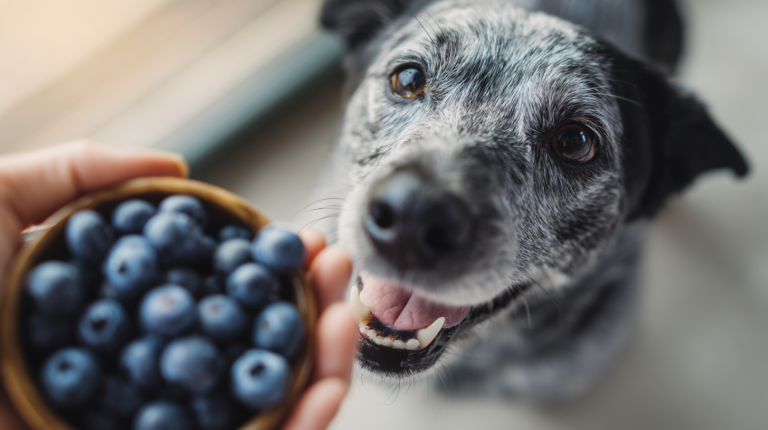Do green anoles lay eggs? Discover 7 fascinating facts about green anole reproduction, egg-laying behavior, and essential care tips for reptile enthusiasts and pet owners.
Table of Contents
Do green anoles lay eggs? This question captivates many reptile enthusiasts and pet owners who are considering adding these vibrant lizards to their families. Green anoles (Anolis carolinensis), often called American chameleons, are fascinating creatures that have captured the hearts of reptile lovers across the United States and Europe. With over 400 species of anoles worldwide, the green anole stands out as one of the most popular pet reptiles, and understanding their reproductive habits is crucial for proper care.
When I first adopted my green anole from a pet rescue in North Carolina, I was amazed by how quickly she adapted to her new terrarium. Within just three months, I discovered small, pearl-white eggs buried in her substrate, which sparked my deep dive into anole reproduction and care. This experience taught me that understanding egg-laying behavior is essential for any anole owner, whether you’re a beginner or experienced reptile keeper.
The answer to “do green anoles lay eggs?” is a resounding yes, and their reproductive process is more complex and fascinating than most people realize. These remarkable reptiles exhibit unique breeding behaviors, specific environmental requirements for successful reproduction, and intricate care needs that every pet owner should understand.
Understanding Green Anole Reproduction Basics
Green anoles are oviparous reptiles, meaning they reproduce by laying eggs rather than giving birth to live young. This reproductive strategy has evolved over millions of years, allowing anoles to thrive in various environmental conditions throughout their native range in the southeastern United States.
The reproductive cycle of green anoles is closely tied to environmental factors, particularly temperature, humidity, and photoperiod (day length). During optimal breeding conditions, typically from April through September, female green anoles can lay eggs multiple times throughout the season. This extended breeding period allows for maximum reproductive success in their natural habitat.
Female green anoles reach sexual maturity between 8-12 months of age, while males typically mature slightly earlier. The reproductive process begins with elaborate courtship displays, where males extend their bright red dewlaps (throat fans) and perform head-bobbing dances to attract potential mates. These displays serve both as attraction mechanisms and territorial signals to other males.
Understanding the basic reproductive biology of green anoles helps pet owners provide appropriate care and recognize normal versus abnormal behaviors. Unlike mammals, anoles don’t require a mate to produce eggs – females can lay infertile eggs even without male presence, though these eggs won’t develop into offspring.
The egg-laying process, scientifically called oviposition, typically occurs 2-4 weeks after mating. Female anoles seek out suitable nesting sites with specific moisture and temperature requirements, demonstrating remarkable instinctual behavior that has been refined through evolutionary adaptation.
Table 1 – Green Anole Reproductive Timeline
| Stage | Timeline | Key Characteristics | Environmental Needs |
|---|---|---|---|
| Sexual Maturity | 8-12 months | Ready for breeding | Proper nutrition, UVB lighting |
| Courtship | Spring-Summer | Dewlap displays, head bobbing | Temperatures 75-85°F |
| Mating | April-September | Brief copulation | High humidity (60-80%) |
| Egg Development | 2-4 weeks post-mating | Internal egg formation | Calcium supplementation |
| Egg Laying | Every 2-3 weeks | 1-2 eggs per clutch | Moist substrate available |
| Incubation | 35-45 days | Temperature-dependent | 78-82°F, 80% humidity |
| Hatching | Summer-Early Fall | Miniature adults emerge | Safe hiding spaces |
7 Amazing Facts About Green Anole Egg-Laying
Fact 1: Green Anoles Can Lay Up to 15 Eggs Per Season
One of the most remarkable aspects of green anole reproduction is their prolific egg-laying capacity. A single healthy female can produce between 8-15 eggs throughout a breeding season, laying them in small clutches of 1-2 eggs every 2-3 weeks. This reproductive strategy maximizes the chances of offspring survival while distributing the energy cost of reproduction over several months.
The frequency of egg-laying depends heavily on environmental conditions, nutrition, and the female’s overall health status. Well-fed anoles with access to proper UVB lighting, calcium supplementation, and optimal temperatures tend to lay more eggs than those kept in suboptimal conditions. Research from the Journal of Herpetology indicates that captive green anoles with consistent environmental parameters can maintain laying cycles for up to 6 months.
This high reproductive output serves an important evolutionary purpose in the wild, where egg and juvenile mortality rates can exceed 80%. By producing multiple clutches throughout the season, green anoles increase the probability that at least some offspring will survive to reproductive age.
Fact 2: Temperature Determines the Sex of Baby Anoles
Green anoles exhibit temperature-dependent sex determination (TSD), a fascinating biological phenomenon where incubation temperature influences whether eggs develop into males or females. This characteristic is shared with many reptile species and represents an incredible adaptation to environmental conditions.
Eggs incubated at temperatures between 84-87°F (29-30.5°C) typically produce more males, while temperatures around 78-82°F (25.5-28°C) favor female development. Intermediate temperatures often result in mixed sex ratios. This temperature sensitivity occurs during a critical period approximately 10-20 days into incubation when the gonads are developing.
For pet owners attempting to breed green anoles, understanding TSD is crucial for predicting offspring characteristics. Professional breeders often manipulate incubation temperatures to achieve desired sex ratios, though this requires precise temperature control and monitoring equipment.
Fact 3: Females Don’t Need Males to Lay Eggs
Contrary to popular belief, female green anoles can and will lay eggs without the presence of a male. These unfertilized eggs, while incapable of developing into offspring, represent a normal physiological process for sexually mature females. This phenomenon, called parthenogenetic egg-laying, occurs in many reptile species.
Single female anoles kept as pets may lay eggs every few weeks during breeding season, which can concern novice owners who worry about their pet’s health. However, this behavior is completely natural and indicates a healthy, mature female responding to environmental cues that trigger reproductive cycles.
The eggs produced without mating are typically smaller and may have different shell characteristics compared to fertilized eggs. They’ll gradually decompose if left in the substrate, providing nutrients back to the terrarium ecosystem.
Fact 4: Egg-Laying Location is Critical for Success
Green anoles are incredibly selective about their egg-laying sites, demonstrating sophisticated environmental assessment abilities. In the wild, females seek out locations with specific moisture levels, protection from predators, and appropriate substrate composition. This instinctual behavior ensures optimal conditions for egg development.
Preferred nesting sites include loose, moist soil under logs, rocks, or vegetation where humidity remains relatively stable. The substrate must be loose enough for the female to dig a small burrow but firm enough to prevent the eggs from being crushed. Proper nesting site selection can mean the difference between successful hatching and egg failure.
In captivity, providing suitable egg-laying substrates is essential for female health and breeding success. A mixture of peat moss, vermiculite, and organic potting soil creates ideal conditions. The substrate should be kept consistently moist but not waterlogged, with depths of at least 4-6 inches to allow proper burrow construction.
Fact 5: Egg Size Correlates with Female Size and Nutrition
The size of green anole eggs provides valuable insights into the female’s health, age, and nutritional status. Larger, well-nourished females typically produce bigger eggs with more yolk reserves, giving their offspring better survival chances during the vulnerable early development period.
Research has shown that egg volume can vary by up to 40% between different females, with nutrition being the primary determining factor. Females fed a diverse diet rich in calcium, vitamin D3, and appropriate protein sources consistently produce larger, more viable eggs compared to those on limited or improper diets.
The relationship between maternal condition and egg quality extends beyond size to include shell thickness, yolk composition, and overall viability. This connection emphasizes the importance of proper nutrition for breeding females, starting several months before the anticipated breeding season.
Fact 6: Incubation Humidity Must be Precisely Controlled
Successful green anole egg development requires specific humidity levels throughout the incubation period, with optimal ranges between 75-85% relative humidity. This precise requirement reflects the eggs’ semi-permeable shell structure, which allows for gas exchange while preventing excessive moisture loss.
Too low humidity causes eggs to desiccate and fail to develop properly, while excessive moisture can lead to fungal infections and embryo death. Professional breeders use sophisticated incubation systems with digital humidity controllers to maintain these critical parameters throughout the 35-45 day incubation period.
The humidity requirement also explains why green anoles prefer specific microhabitats in the wild and why captive breeding requires careful environmental management. Even small deviations from optimal humidity can significantly impact hatching success rates.
Fact 7: Baby Anoles are Independent from Birth
Perhaps one of the most remarkable facts about green anole reproduction is that hatchlings emerge as fully independent miniature adults, requiring no parental care whatsoever. This reproductive strategy, called precocial development, allows parents to invest energy in producing more offspring rather than caring for existing young.
Newly hatched anoles measure approximately 2-2.5 inches from snout to tail tip and possess all the instinctual behaviors necessary for survival, including hunting, territorial recognition, and predator avoidance. They immediately begin seeking appropriate-sized prey items, typically small insects and spiders.
This independence comes at a cost – juvenile mortality rates are extremely high, with estimates suggesting that less than 20% of hatchlings survive their first year in the wild. However, those that do survive quickly establish territories and begin preparing for their own reproductive cycles within 8-12 months.
Essential Care Requirements for Egg-Laying Anoles
Providing proper care for egg-laying green anoles requires understanding their unique nutritional, environmental, and behavioral needs during the reproductive period. Female anoles expend significant energy producing eggs, making them more susceptible to health issues if care requirements aren’t met.
Nutritional support becomes critically important during the breeding season, with calcium and vitamin D3 supplementation being essential for proper eggshell formation. Gravid (egg-bearing) females should receive calcium-dusted insects every other day, along with access to cuttlebone or calcium blocks for additional supplementation.
Environmental modifications may be necessary to accommodate egg-laying behavior. This includes providing deeper substrate layers, maintaining higher humidity levels, and ensuring adequate hiding spots where females feel secure enough to lay eggs. Temperature regulation remains crucial, with basking spots around 85-90°F and cool areas around 75-78°F.
Monitoring gravid females for signs of egg-binding (dystocia) is essential, as this condition can be life-threatening. Symptoms include lethargy, loss of appetite, straining without producing eggs, and visible swelling in the abdomen. Any concerning symptoms require immediate veterinary attention from a reptile-experienced veterinarian.
Table 2 – Breeding Setup Requirements
| Component | Specification | Purpose | Maintenance |
|---|---|---|---|
| Terrarium Size | 40+ gallons for breeding pair | Adequate space for territorial behavior | Weekly cleaning |
| Substrate Depth | 6-8 inches minimum | Allows proper nesting burrow construction | Monthly replacement |
| Humidity Level | 75-85% during breeding | Essential for egg development | Daily monitoring |
| Temperature Gradient | 75-90°F basking to cool zones | Thermoregulation and breeding triggers | Continuous monitoring |
| UVB Lighting | 10-12% UVB, 12-hour cycle | Vitamin D3 synthesis, breeding cues | Bulb replacement every 6 months |
| Calcium Supplementation | Every other feeding during breeding | Prevents egg-binding, ensures shell quality | Dust insects before feeding |
| Nesting Boxes | Multiple humid hides with substrate | Secure egg-laying locations | Clean after each use |
Warning Signs Every Green Anole Owner Should Recognize
Recognizing potential health issues in egg-laying green anoles can mean the difference between successful breeding and serious complications. Understanding these warning signs helps pet owners provide timely intervention and seek appropriate veterinary care when necessary.
Egg-binding, or dystocia, represents the most serious immediate threat to gravid females. This condition occurs when a female cannot pass eggs naturally, potentially leading to infection, internal injury, or death if left untreated. Early recognition of egg-binding symptoms allows for prompt veterinary intervention, often preventing serious complications.
Physical changes in gravid females can indicate various health concerns. Excessive weight loss during the breeding season may suggest inadequate nutrition or underlying health issues. Conversely, abnormal swelling beyond normal egg development could indicate infection or other complications requiring immediate attention.
Behavioral changes often precede visible health problems in reptiles. Green anoles that suddenly become lethargic, stop eating, or exhibit unusual positioning may be experiencing reproductive difficulties. Since reptiles often hide illness until conditions become severe, any significant behavioral changes warrant close monitoring and potentially veterinary consultation.
Appetite changes during breeding season are normal to some extent, but complete food refusal lasting more than a week in a gravid female requires attention. Similarly, females that continue laying eggs excessively without adequate recovery periods between clutches may develop nutritional deficiencies or other health complications.
For more expert pet care tips and product recommendations, visit BlithePet.com — your trusted source for pet wellness.
Common Mistakes in Green Anole Breeding Care
Many well-intentioned reptile owners make critical errors when caring for breeding green anoles, often stemming from lack of specific knowledge about reproductive requirements. Understanding these common mistakes helps prevent serious health complications and breeding failures.
Inadequate calcium supplementation represents perhaps the most frequent and dangerous mistake in anole breeding care. Many owners assume that a regular diet provides sufficient calcium for egg production, but the demands of shell formation far exceed normal nutritional requirements. Without proper supplementation, females develop metabolic bone disease or suffer from egg-binding due to poor shell formation.
Improper substrate preparation causes many breeding failures and health issues. Using substrate that’s too shallow prevents natural nesting behavior, while substrate that’s too dry or wet creates unsuitable conditions for egg development. Many owners also use inappropriate substrate materials that don’t hold moisture properly or contain harmful chemicals.
Temperature and humidity fluctuations during the breeding season can disrupt reproductive cycles and cause egg development problems. Many novice breeders underestimate the precision required for successful reproduction, leading to failed breeding attempts or developmental abnormalities in offspring.
Overcrowding breeding setups is another frequent error that leads to stress, territorial conflicts, and reduced breeding success. Green anoles require adequate space to establish territories and feel secure enough for normal reproductive behavior. Housing too many animals together or using insufficient terrarium sizes often results in breeding failures.
Failing to provide adequate post-laying care for females represents a critical oversight that can impact future breeding success and overall health. After laying eggs, females require increased nutrition and recovery time before the next reproductive cycle. Pushing females to breed continuously without adequate recovery leads to health deterioration and reduced reproductive success.
When to Consult a Reptile Veterinarian
Knowing when to seek professional veterinary care for breeding green anoles is crucial for preventing serious complications and ensuring successful reproductive outcomes. While many aspects of anole breeding can be managed at home, certain situations require immediate professional intervention.
Suspected egg-binding always requires emergency veterinary attention. If a gravid female shows signs of distress, straining without producing eggs, loss of appetite lasting more than 3 days, or visible abdominal swelling with lethargy, immediate veterinary care is essential. Egg-binding can quickly become life-threatening and often requires medical or surgical intervention.
Abnormal egg appearance or development problems warrant professional evaluation. Eggs with unusual shapes, colors, or textures may indicate nutritional deficiencies, infections, or other health issues in the breeding female. Similarly, consistently low hatching rates or developmental abnormalities in offspring suggest underlying problems requiring veterinary investigation.
Pre-breeding health evaluations are highly recommended for females intended for breeding programs. A comprehensive veterinary examination can identify potential health issues that might complicate reproduction and ensure that breeding animals are in optimal condition for successful reproduction.
Post-laying complications, including prolonged recovery periods, continued lethargy, or signs of infection, require professional assessment. While some fatigue after egg-laying is normal, severe or prolonged symptoms may indicate complications requiring medical treatment.
Nutritional consultation with a reptile-experienced veterinarian helps optimize breeding success and prevent health complications. Professional guidance on supplementation schedules, dietary modifications during breeding season, and long-term nutritional planning ensures optimal reproductive health.
Step-by-Step Guide to Egg Incubation
Successfully incubating green anole eggs requires precise environmental control and careful monitoring throughout the development period. This step-by-step approach helps maximize hatching success rates and produces healthy offspring.
Step 1: Egg Collection and Initial Assessment Carefully remove eggs from the nesting site within 24-48 hours of laying to prevent damage or contamination. Handle eggs gently, avoiding rotation or excessive movement that could harm developing embryos. Examine each egg for signs of fertility – fertile eggs typically appear plump with a slightly translucent shell, while infertile eggs may appear chalky or collapsed.
Step 2: Incubation Container Preparation Prepare incubation containers using plastic storage boxes with tight-fitting lids. Create small ventilation holes to allow gas exchange while maintaining humidity. Fill containers with incubation medium consisting of equal parts vermiculite and water by weight, creating a substrate that holds moisture without becoming waterlogged.
Step 3: Egg Placement and Environmental Setup Create small depressions in the incubation medium and gently place eggs halfway buried, maintaining their original orientation. Avoid completely burying eggs, as this can interfere with gas exchange. Space eggs at least 1 inch apart to prevent contamination if one egg fails.
Step 4: Temperature and Humidity Control Maintain consistent incubation temperature between 78-82°F using a reliable incubator or heating system. Monitor humidity levels to ensure they remain between 75-85% throughout incubation. Use digital thermometers and hygrometers for accurate monitoring, checking levels daily.
Step 5: Monitoring and Maintenance Check eggs weekly for signs of development or problems. Healthy developing eggs maintain their shape and show subtle changes over time, while failed eggs may collapse, change color, or develop mold. Remove any obviously failed eggs immediately to prevent contamination of healthy eggs.
Step 6: Hatching Preparation As hatching approaches (typically 35-45 days), prepare appropriate housing for newly emerged anoles. Set up small terrariums with proper heating, lighting, and humidity for hatchlings. Have appropriate-sized food items ready, including pinhead crickets, fruit flies, and other small insects.
Table 3 – Incubation Troubleshooting Guide
| Problem | Possible Causes | Solutions | Prevention |
|---|---|---|---|
| Eggs Collapse/Shrivel | Low humidity, infertile eggs | Increase humidity, check fertility | Use digital hygrometer, fertile eggs only |
| Mold Growth | Excessive humidity, poor ventilation | Reduce humidity, improve airflow | Proper ventilation holes, cleanliness |
| No Development | Wrong temperature, infertile eggs | Check temperature, verify fertility | Maintain 78-82°F consistently |
| Developmental Abnormalities | Temperature fluctuations | Stabilize temperature control | Use reliable incubator system |
| Late Embryo Death | Humidity issues, contamination | Review all parameters | Maintain sterile conditions |
| Slow Development | Low temperatures | Increase temperature slightly | Regular temperature monitoring |
| Multiple Failures | Poor breeding setup, nutrition | Review entire breeding program | Pre-breeding health checks |
Myth-Busting: Common Misconceptions About Green Anole Eggs
Several persistent myths surround green anole reproduction and egg-laying, often leading to improper care and unrealistic expectations among pet owners. Addressing these misconceptions helps promote better understanding and more successful breeding outcomes.
Myth 1: Green anoles only lay eggs if they’ve mated This common misconception leads many single-anole owners to worry unnecessarily when their female pet lays eggs. In reality, sexually mature females will lay eggs regardless of male presence, following natural hormonal cycles triggered by environmental factors like temperature, humidity, and photoperiod. These unfertilized eggs are completely normal and indicate a healthy, mature female.
Myth 2: All eggs will hatch if properly incubated Many novice breeders expect 100% hatching success, leading to disappointment and concern when some eggs fail to develop. In reality, even under optimal conditions, hatching rates of 60-80% are considered excellent. Natural fertility rates, genetic factors, and environmental variables all influence development success. Professional breeders expect some egg loss and plan accordingly.
Myth 3: Larger clutches indicate healthier females While nutrition and health affect egg production, clutch size is primarily determined by species genetics and individual variation rather than health status. Green anoles naturally lay small clutches of 1-2 eggs, and attempts to increase clutch size through feeding or supplementation can actually harm female health. Quality of eggs matters far more than quantity for successful reproduction.
Understanding these myths helps pet owners maintain realistic expectations and provide appropriate care for their breeding anoles. Proper education prevents unnecessary worry and promotes more successful breeding programs based on scientific understanding rather than misconceptions.
Expert Tips for Successful Green Anole Breeding
Achieving consistent breeding success with green anoles requires attention to numerous details that casual pet owners often overlook. These expert tips, developed through years of professional breeding experience and scientific research, can significantly improve your breeding outcomes and the health of your anoles.
Tip 1: Establish Proper Cycling Periods Mimic natural seasonal changes by implementing temperature and lighting cycles that trigger breeding behavior. Reduce temperatures to 70-75°F and decrease daylight hours to 8-10 hours during winter months, then gradually increase both parameters starting in early spring. This cycling process conditions anoles for optimal breeding readiness and synchronizes reproductive cycles.
Tip 2: Provide Multiple Nesting Options Create several potential nesting sites throughout the terrarium using different substrate mixtures and moisture levels. This allows females to choose their preferred laying location and reduces stress associated with egg-laying. Use combinations of peat moss, vermiculite, and organic soil in varying ratios to provide options.
Tip 3: Monitor Female Body Condition Closely Track female weight and body condition throughout the breeding season, maintaining detailed records of feeding, supplementation, and egg production. Healthy breeding females should maintain stable weight despite regular egg production. Significant weight loss indicates inadequate nutrition or potential health issues requiring immediate attention.
Tip 4: Use Appropriate Breeding Age Ratios Pair younger males (1-2 years) with mature females (2-3 years) for optimal breeding success. Younger males tend to be more active breeders, while mature females produce larger, more viable eggs with better survival rates. Avoid breeding very young or very old animals, as this often results in poor reproductive outcomes.
Tip 5: Implement Quarantine Protocols Maintain strict quarantine procedures for new breeding animals, isolating them for at least 60 days before introduction to breeding groups. This prevents disease transmission and allows for comprehensive health evaluation. Quarantine also provides time to condition new animals to your specific care routine and environmental parameters.
Tip 6: Maintain Detailed Breeding Records Keep comprehensive records of all breeding activities, including mating observations, egg-laying dates, incubation parameters, and hatching results. These records help identify patterns, optimize conditions, and troubleshoot problems. Documentation also proves invaluable for tracking genetic lines and planning future breeding projects.
Tip 7: Provide Post-Breeding Recovery Time Allow females adequate recovery time between breeding cycles, providing enhanced nutrition and reduced stress during rest periods. Continuous breeding without recovery leads to health deterioration and reduced reproductive success. Plan for off-season rest periods that allow females to rebuild body condition.
Tip 8: Use Species-Appropriate Social Structures House breeding groups in appropriate social configurations, typically one male with 2-3 females in adequately sized enclosures. This ratio reduces male harassment of individual females while providing adequate breeding opportunities. Monitor for territorial conflicts and separate animals if aggressive behavior becomes problematic.
Are you considering breeding green anoles in your facility, or do you have questions about specific aspects of their reproductive care? Understanding these complex requirements helps ensure both successful breeding outcomes and optimal animal welfare.
Caring for Hatchling Green Anoles
Successfully hatching green anole eggs represents just the beginning of the breeding process. Hatchling care requires specialized knowledge and equipment to ensure these tiny reptiles survive their vulnerable early weeks and develop into healthy adults.
Newly hatched green anoles measure only 2-2.5 inches total length and weigh less than 0.5 grams, making them extremely delicate and requiring careful handling. Their small size makes them susceptible to dehydration, temperature fluctuations, and predation from inappropriate cage mates or even adult anoles.
Housing requirements for hatchlings differ significantly from adult setups. Use smaller enclosures (10-20 gallon capacity) to prevent stress and make feeding more efficient. Provide numerous hiding spots using artificial plants, cork bark pieces, and small containers. The smaller space also makes it easier to maintain appropriate temperature and humidity levels for developing juveniles.
Feeding hatchling green anoles presents unique challenges due to their minute size and specific nutritional requirements. Appropriate prey items include pinhead crickets, fruit flies, small roaches, and other insects measuring 1/4 inch or smaller. Feed hatchlings daily with appropriately sized prey, dusting food items with calcium and vitamin supplements designed for juvenile reptiles.
Temperature and humidity requirements remain critical for hatchling survival and proper development. Maintain temperatures between 78-85°F with a slight basking area reaching 88-90°F. Humidity levels should remain between 70-80%, slightly higher than adult requirements. Use digital monitoring equipment to ensure consistency, as hatchlings are less tolerant of environmental fluctuations than adults.
Growth rates vary significantly among individuals, but most hatchlings double their size within the first 3-4 months under optimal conditions. Monitor growth progress by tracking weight and length measurements bi-weekly. Slow growth may indicate inadequate nutrition, environmental problems, or health issues requiring intervention.
Seasonal Breeding Considerations
Understanding seasonal patterns in green anole reproduction helps pet owners provide appropriate care throughout the year and optimize breeding success. These reptiles have evolved specific responses to seasonal changes that trigger and regulate reproductive cycles.
Spring preparation begins in February and March as increasing daylight hours and warming temperatures stimulate breeding behavior. During this period, increase feeding frequency and begin intensive calcium supplementation for breeding females. Gradually raise terrarium temperatures and extend lighting periods to mimic natural seasonal changes.
Summer represents peak breeding season when most egg-laying occurs. Monitor females closely for signs of gravidity and egg-laying behavior. Ensure adequate nesting sites are available and maintain optimal environmental conditions for successful reproduction. This period requires the most intensive monitoring and care for breeding animals.
Fall breeding activities gradually decline as temperatures cool and daylight hours decrease. Continue providing supportive nutrition for females that may still be laying eggs, but begin reducing supplementation levels as reproductive activity decreases. This transitional period requires careful monitoring to ensure animals remain healthy as they shift from breeding to maintenance phases.
Winter represents a crucial rest period for breeding animals, allowing them to recover body condition and prepare for the following breeding season. Reduce feeding frequency slightly and decrease temperatures to 70-75°F to encourage natural dormancy patterns. Maintain basic care requirements but avoid stimulating breeding behavior during this recovery period.
How has your experience been with seasonal changes in your anole’s behavior, and have you noticed breeding-related activities during specific times of the year?
Advanced Breeding Techniques and Considerations
Professional green anole breeding involves sophisticated techniques that go beyond basic care requirements. These advanced methods help optimize breeding success, maintain genetic diversity, and produce high-quality offspring for conservation or commercial purposes.
Genetic management plays a crucial role in successful breeding programs, requiring careful selection of breeding pairs to maintain genetic diversity and avoid inbreeding depression. Maintain detailed records of parentage and plan breeding combinations that maximize genetic variation while preserving desirable traits. Consider outcrossing with unrelated animals periodically to introduce new genetic material.
Artificial incubation systems provide superior control over environmental conditions compared to natural incubation methods. Professional-grade incubators with precise temperature and humidity controls significantly improve hatching success rates and allow for experimental manipulation of incubation parameters. These systems also enable larger-scale breeding operations with consistent results.
Nutritional optimization for breeding animals goes beyond basic supplementation to include specialized feeding protocols designed to maximize reproductive success. This includes specific protein ratios, vitamin formulations, and mineral supplements timed to coincide with different phases of the reproductive cycle. Research-based nutrition programs can significantly improve breeding outcomes.
Health monitoring and preventive veterinary care become even more critical in breeding operations where disease outbreaks can devastate entire populations. Implement regular health screenings, quarantine protocols, and preventive treatments to maintain population health. Establish relationships with reptile-specialized veterinarians who can provide ongoing consultation and emergency care.
Record keeping and data analysis help identify successful breeding combinations, optimal environmental parameters, and potential problems before they become serious issues. Use database software or specialized breeding management programs to track complex relationships and analyze breeding success over multiple generations.
FAQ Section
Green Anole Egg-Laying – Frequently Asked Questions
Conclusion
Understanding the answer to do green anoles lay eggs? opens the door to appreciating these remarkable reptiles’ complex reproductive biology and care requirements. Green anoles are indeed prolific egg-layers, with females capable of producing multiple clutches throughout the breeding season, regardless of male presence.
The seven amazing facts about green anole egg-laying reveal the sophistication of their reproductive strategy, from temperature-dependent sex determination to the remarkable independence of hatchlings. These insights emphasize why proper care during breeding season is so critical for both animal welfare and breeding success.
Successful green anole breeding requires attention to numerous environmental and nutritional factors, precise monitoring of reproductive cycles, and understanding of potential health complications. By following expert guidelines for breeding setup, egg incubation, and hatchling care, reptile enthusiasts can achieve consistent breeding success while maintaining optimal animal health.
The seasonal nature of anole reproduction, combined with their specific environmental requirements, makes them both challenging and rewarding animals for dedicated reptile keepers. Whether you’re a pet owner who discovered unexpected eggs or an aspiring breeder planning a comprehensive breeding program, understanding these reproductive processes helps ensure positive outcomes for both animals and keepers.
Remember that breeding reptiles carries significant responsibilities, including providing appropriate care for potentially numerous offspring and ensuring adequate homes for all animals produced. Consider your long-term commitment and resources before embarking on breeding projects.
Have a similar experience with your pet anole, or are you planning to start breeding these fascinating reptiles? Share your experiences in the comments below! Don’t forget to check out our other comprehensive reptile care guides at BlithePet.com for more expert advice on keeping your scaly friends healthy and happy.







